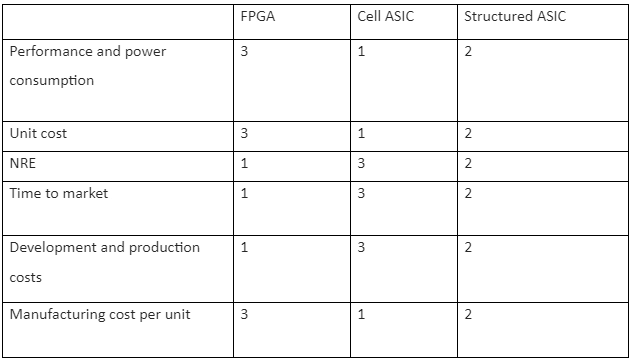5G, AI, Cloud based services: incredible technologies offering incredible potential solutions – but also increasing demands on your computing platforms.
Are you seeking to boost the performance of your business’s platforms? Then you are probably trying to decide between FPGA, cell-based ASIC and structured ASIC solutions. Here’s the quick and dirty rundown on the advantages and disadvantages of each:
Trying to decide between FPGA, cell-based ASIC, and structured ASIC solutions? Here’s a quick rundown on each. These are integrated circuits with programmable hardware fabric. The circuitry design within the FPGA is intended to implement a broad spectrum of various functions – and enables reprogramming to perform each of these functions, as required.
FPGA therefore offer excellent flexibility, minimal time to market, and 0 none recurring engineering cost (NRE).
ASICs, unlike FPGAs are customized, purpose designed, and mass produced to fulfill one specific function. Also unlike FPGA’s they can’t be reprogrammed, which means they require a non-negligible NRE investment.
Structured ASIC’s offers a compromise between cell-based ASIC and FPGA. Structured ASIC’s essentially start with a minimal base array (including logic, I/O, transceivers, memory) and a hard processor system. The only thing designers need to attend to is interconnect customization, enabling them to focus on custom functionality implementation. Thus, structured ASIC has a lower power consumption than FPGA and faster time to market and lower NRE than cell based ASIC.

© 2024 Ready. All rights reserved